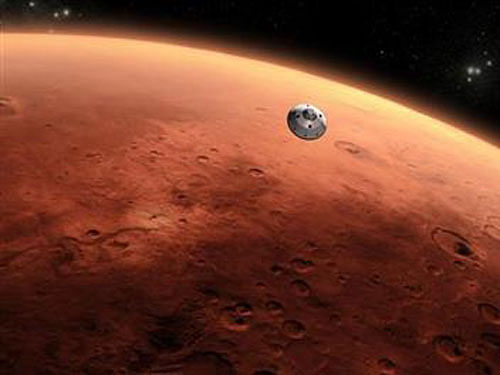
With two more Mars orbiters sent into space last year, including India's MOM probe, traffic has picked up around the red planet — so much so that NASA has bolstered its traffic monitoring process to avoid spacecraft collisions.
The US space agency has beefed up a process of traffic monitoring, communication and manoeuvre planning to ensure that Mars orbiters do not approach each other too closely.
Last year's addition of two new spacecraft orbiting Mars brought the census of active Mars orbiters to five, the most ever, NASA said.
NASA's Mars Atmosphere and Volatile Evolution (MAVEN) and India's Mars Orbiter Mission joined the 2003 Mars Express from ESA (the European Space Agency) and two from NASA: the 2001 Mars Odyssey and the 2006 Mars Reconnaissance Orbiter (MRO).
The newly enhanced collision-avoidance process also tracks the approximate location of NASA's Mars Global Surveyor, a 1997 orbiter that is no longer working.It's not just the total number that matters, but also the types of orbits missions use for achieving their science goals.
"Previously, collision avoidance was coordinated between the Odyssey and MRO navigation teams," said Robert Shotwell, Mars Programme chief engineer at NASA's Jet Propulsion Laboratory, Pasadena, California.
"There was less of a possibility of an issue. MAVEN's highly elliptical orbit, crossing the altitudes of other orbits, changes the probability that someone will need to do a collision-avoidance manoeuvre.
"We track all the orbiters much more closely now. There's still a low probability of needing a manoeuvre, but it's something we need to manage," said Shotwell.Traffic management at Mars is much less complex than in Earth orbit, where more than 1,000 active orbiters plus additional pieces of inactive hardware add to hazards.
As Mars exploration intensifies, though, and will continue to do so with future missions, precautions are increasing.
The new process was established to manage this growth as new members are added to the Mars orbital community in years to come, NASA said.
All five active Mars orbiters use the communication and tracking services of NASA's Deep Space Network, which is managed at Jet Propulsion Laboratory (JPL).
This brings trajectory information together, and engineers can run computer projections of future trajectories out to a few weeks ahead for comparisons.
"It's a monitoring function to anticipate when traffic will get heavy," said Joseph Guinn, manager of JPL's Mission Design and Navigation Section.
"When two spacecraft are predicted to come too close to one another, we give people a heads-up in advance so the project teams can start coordinating about whether any manoeuvres are needed," said Guinn.
The amount of uncertainty in the predicted location of a Mars orbiter a few days ahead is more than two kilometres.